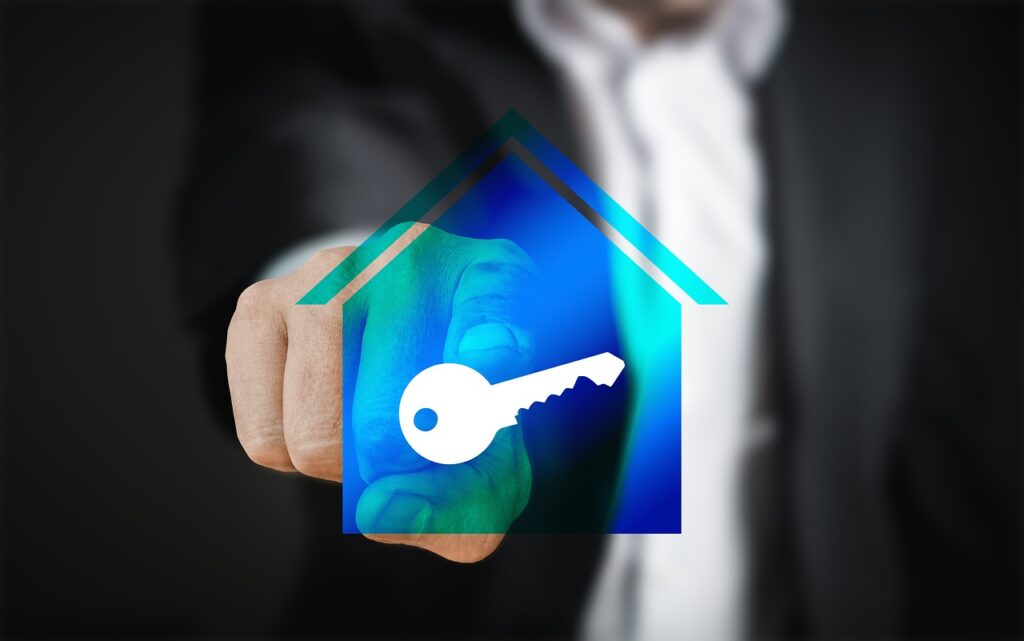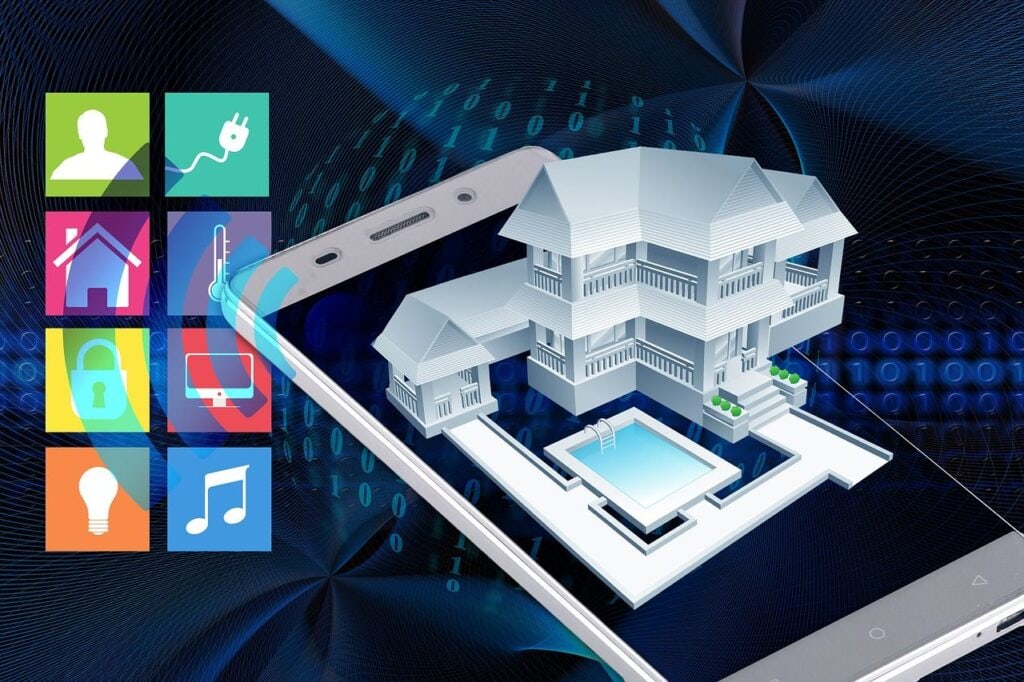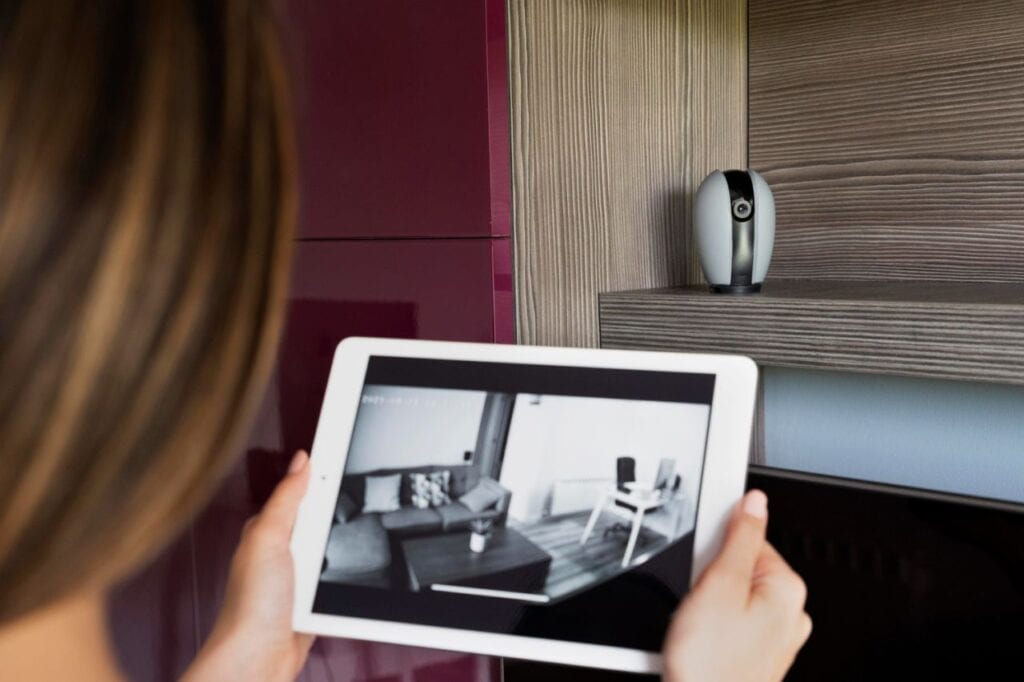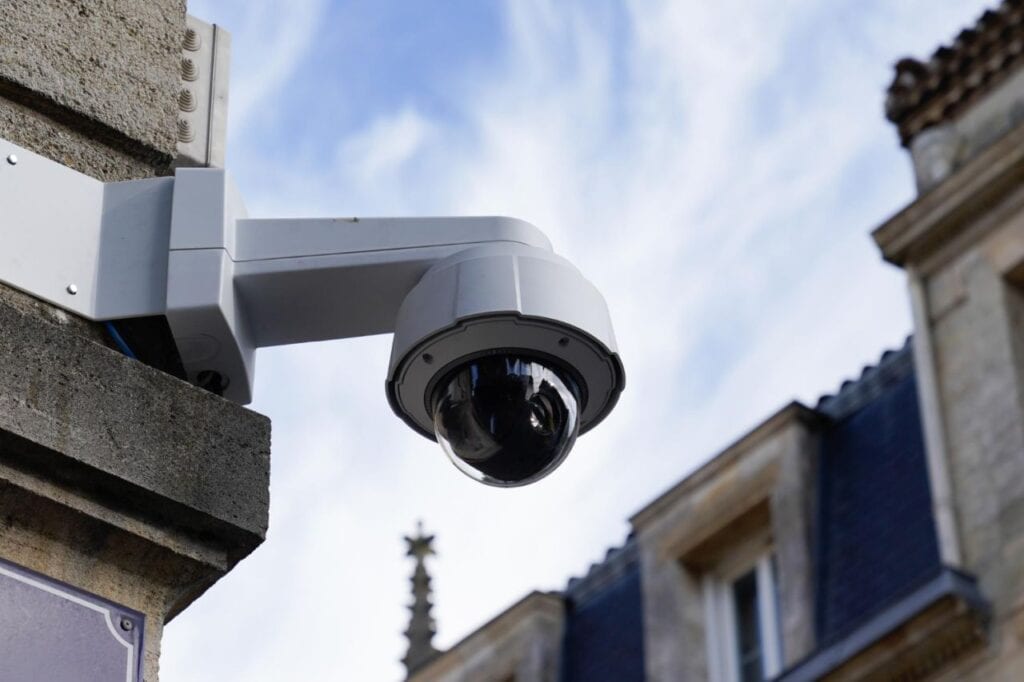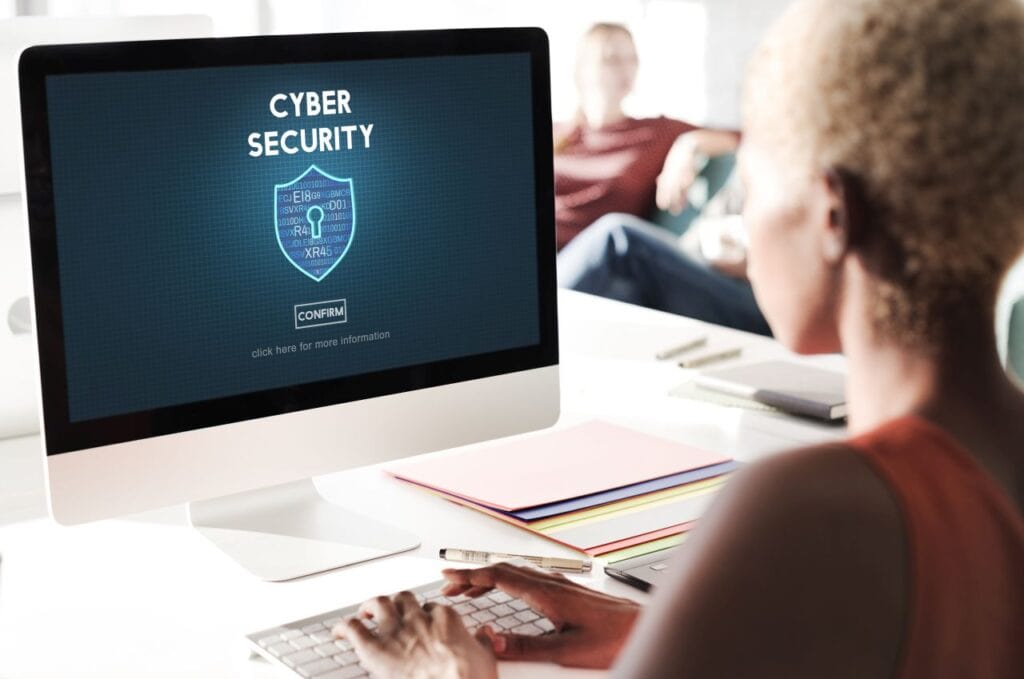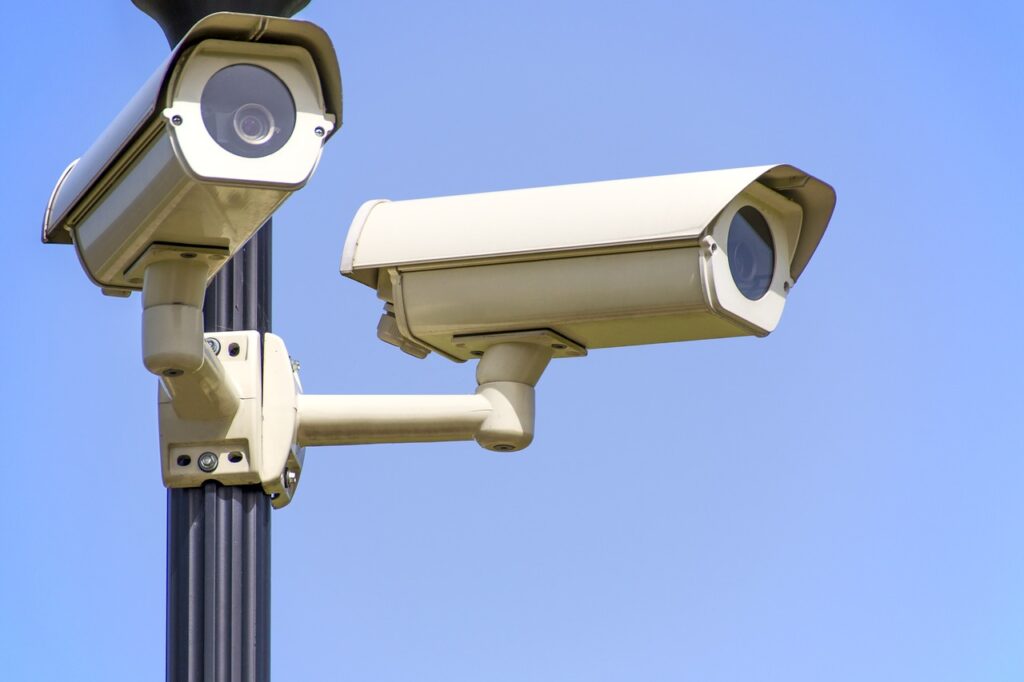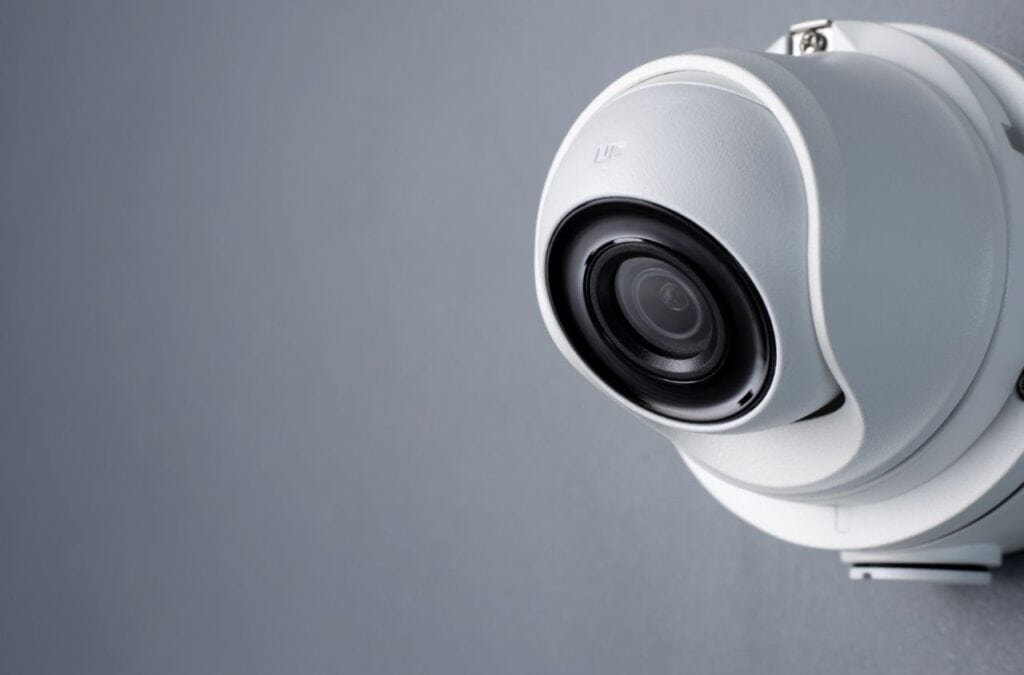Have you considered getting a wireless security system for your home or business? we can see why you might want to know how vulnerable they are to hacking attempts. It's not surprising that hackers can crack wireless home security systems if they have the necessary knowledge and motivation; after all, these systems are essentially no different from any other computer-based system.
However, if you are careful, most hackers shouldn't be able to penetrate your wireless home security system. Read on to find out if wireless home security systems are safe and what you can do to protect yourself and your investment.
Can Intruders Break Into My Home Security System?
To answer your question, yes, it is possible to break into any internet-connected device. However, if digital security best practises are put into place, the possibility of a security system being compromised is extremely low. But that's something we can talk about later. Check this list of high-quality and affordable Melbourne CCTV to help you decide which product to choose for your home security.
Frequently Asked Questions About Home Security
Not all home security systems are hackable. Local alarm systems, for instance, aren't connected to the internet and thus aren't hackable. On the other hand, smart home security systems are connected to the internet, so there is a possibility of hacking, like any other internet-connected product.
According to Security.org's privacy rating database, the safest home security system is Frontpoint. Frontpoint updates its software regularly, allows customers to delete their data and has no history of surveillance.
It's impossible to say if wireless alarm systems are secure or not without knowing more information. For example, wireless alarm systems with end-to-end encryption require passwords and advanced authentication. On the other hand, WPA protocols are more secure than systems with no encryption, no mandated passwords or authentication, and WEP protocols. In short, it depends on the system itself.
Customers love a wireless alarm system for its convenience. But what if it gets hacked? Here's what you need to know about digital security.
The smart home industry is growing rapidly, and it's expected for it to grow to a $21.6 billion market by 2020. This means that smart home components like wireless alarm systems or security cameras have become more common.
These devices rely on an internet connection, making them convenient for you.
However, the primary problem with a smart home is that it's easier for people to hack into it. Sure, this system helps protect you from physical threats like burglars, but there are hackers out there that can remotely compromise your home's safety.
They can compromise some things like your identity and personal information.
It's impossible to say if wireless alarm systems are secure or not without knowing more information. For example, wireless alarm systems with end-to-end encryption require passwords and advanced authentication. On the other hand, WPA protocols are more secure than systems with no encryption, no mandated passwords or authentication, and WEP protocols. In short, it depends on the system itself.
How Vulnerable Is Your Wireless Security System?
To answer your question quickly: yes. This is because even the most advanced security systems have flaws that can be exploited by malicious actors. This means that the system's efficacy can be evaluated based on how difficult it is for hackers to circumvent.
Many inexpensive alarms can be quickly compromised due to their lack of modern security features like encryption and authentication. This weakness can be exploited by hackers to either turn it off or force it to function. If an intruder is within three metres (about ten feet) of your home, he or she will be able to disarm the system.
Encryption is yet another facet of your security system to keep an eye out for. If your system doesn't have a high enough level of encryption, hackers can read your data. If someone gains access to your data, they can steal it, use it for their own purposes, or even trigger false alarms in your name. They learn when you are home and can predict when you will leave based on what is going on inside.
Planning to put a security system in your place? At Defend Security Group, you can find high quality and affordable Melbourne home security for your needs.
In addition, they will know precisely where your sensors are and will be able to spot any unlocked or open windows or doors. Worst case scenario: they gain access to your surveillance footage and learn about your activities.
What Makes Security Systems and Cameras Hackable?
Numerous elements, some of which are under human control and others not, contribute to the hackability of smart security systems and smart security cameras.
No Password Protection
Apps used as part of a security system are more vulnerable to hacking if their passwords aren't long, complex, and unique to each user's account. Unfortunately, our research into Australians' password practises indicated that over half of all Australians use passwords of eight characters or fewer, making them easier for thieves to crack. Check the safety of your password using our handy tool. In what ways do you ensure the safety of your password?
Insufficient Verification
It doesn't matter how strong a user's password is if advanced authentication is disabled; accounts can still be compromised. To prevent unauthorised access, two-factor authentication uses a second passcode transmitted to a mobile device, while biometric authentication uses unique identifiers such as a fingerprint or a face.
Breach of Data
When an outsider obtains access to a company's computer system and steals private data like passwords, this is called a data breach. To give just one example, in 2019, more than 3,000 customers of the security app Ring were affected by a data breach. 1 As a result, people were able to access other users' accounts and watch their live footage, which is obviously a major privacy issue. Consequently, Ring mandated two-factor authentication and encouraged users to promptly alter their passwords.
Due to No Encryption
Without a secret handshake or key exchange, the user and the receiver might see each other's data. This was a difficulty for Ring, and we don't mean to be too critical of them. This was a dilemma because it rendered confidentiality of the information hopeless. The user has no say in the encryption method used, yet it is still in their best interest to seek out platforms that incorporate end-to-end security from the get-go. In addition, it's worth noting that Ring ultimately implemented end-to-end encryption across the board for its camera products, proving the need of encryption.
Items Misplaced
Finally, anyone who comes into possession of a mobile phone or tablet that has been misplaced and does not have a passcode may be able to quickly access and monitor home security systems and cameras.
Is It Difficult Or Simple To Break Into A System That Has A Security System?
Let's start by defining hacking, a phrase that most of us are familiar with but may not fully grasp. When someone exploit security holes in computers, they are doing the unlawful crime known as "hacking."
- Keeping people out of a computer system
- Using one's own network to access devices on another network
- The process of information collection
It depends on the system itself, thus we can't give a universal answer to the issue of how simple it is to hack into security systems. It is significantly simpler to break into a system that doesn't use or require strong authentication methods like passwords. Hackers have an easier time breaking into networks when there are data breaches and no encryption in place. However, if a security system adheres to the aforementioned suggestions for best practises, it becomes significantly more difficult to hack (although anything connected to the web is technically vulnerable to hacking).

Security System Hacks: Types
Phishing
The most frequent and straightforward technique of hacking is social engineering, which is just a fancy name for asking individuals for their login credentials directly. In social engineering, fraudsters trick their targets by sending them emails and texts seeming to come from reputable businesses. When victims click on the phishing links, they are brought to spoof login sites where they are asked to submit their personal information, which is then sent to the hackers.
Invasive Programming
Even though phishing is the most typical means of attacking computer systems, it is still possible to gain access through programming. Programming-based hacks, such as exploiting a system's weaknesses and getting administrative access, are far more difficult than phishing. It's a lot trickier to pull off a hack that requires knowledge of computer code.
Forceful Assaults
A brute-force assault occurs when an attacker repeatedly tries to guess a password without any result. Bear in mind that many online accounts limit access after a specific number of failed login attempts, making these assaults largely irrelevant.
Invasions by a Middle Man
In contrast, man-in-the-middle attacks can be implemented with code. Essentially, a hacker needs to "listen" for login credentials by capturing data packets, intercepting the sender and recipient, and then using those credentials to get access.
Possible Entry
Finally, "physical access" describes a situation in which a hacker has actual possession of a device for an extended time period and is able to read its contents without detection.
Discovering Vulnerabilities
As far as is known, there is currently no tailored alarm notice available for these types of attacks. You can take preventative measures, one of which is to use a security camera mobile app, like the one provided by Defend Security Group. You can now view past events that occurred on your system in the form of an event log. Any behaviour outside the norm or that is not authorised may be a sign of a system hack.
One clue could be if your camera starts to feel like it's following you. Pan-tilt-zoom cameras may be targeted in a variety of predetermined ways if they were hacked and the user's control over where the camera was pointed and zoomed was compromised.
The camera's LED light is yet another indicator. A hacker with access to the system could activate the camera at any moment. When have you been hacked and what should you do about it? Some of the most significant red flags to watch out for are:
- The speakers on your cameras are making some peculiar noises. So, tell me, what are they?
- Your cameras' LED indicators have suddenly activated.
- Discrepancies in the shot due to the pan and tilt of your cameras
- Your password is no longer valid, even though you haven't changed it.
- Someone logged into your account using hardware we don't recognise.
Security camera and system hacking is a serious privacy invasion, thus it's crucial to be on the lookout for these indicators.
Exposure of Critical Infrastructure to Hacking
Some recent hacks have lingered in our minds and the minds of the smart home industry as a whole. While we hope you don't add worries about security system hacks to your list, we can't forget about them ourselves.
How Do Hackers Get Into Cameras?
As was previously indicated, thieves can gain access to your surveillance cameras by utilising the credentials they have already stolen. You could get some assistance in this endeavour from your wireless router or camera. Taking extra precautions like setting up a strong wireless encryption and password manager will help reduce vulnerability. First, though, let's talk about the ways and means that hackers penetrate home security systems.
Manipulation of One's Credentials
The majority of login credentials used by hackers come from data breaches. Let's pretend for the sake of argument that you use the same (or a very similar) username and password combination to access a number of different websites. A hacker can gain access to your online shopping and dating accounts, as well as any other accounts that utilise the same combination passwords, by using software to cross-reference or stuff those credentials into the login page of a website you frequently visit.
Methods of Cracking Credentials
Each conceivable combination of characters is run through the system in a certain order in this automated attack on PINs and passwords. This happens when credentials for an account are stolen or made public in a way that is credential or similar stuffing." Let's use the example of an ABC123 password to see what we mean. Hacker software finds this out by trying every possible combination of a password or by changing settings.
Hacking of credentials can be prevented by setting a maximum number of failed login attempts before the system locks out. However, this tactic will only be effective if the hacker tries multiple times to crack your username and password.
Different Attack Methods
Attacks from afar
The hacker in a remote attack, which is more common in the case of a homeowner, looks for a security flaw in the network to exploit. The internet video feed from your security camera, for instance, is vulnerable to credential above stuffing if the camera and router have the same password and that password has been compromised in the past.
If you use the factory-issued passwords for your network's routers and camera, hackers can quickly bypass any protections you've put in place. The maker supplies these codes. Therefore, it is highly advised that you make use of a unique password that is often changed. At a later point, we'll have a more thorough discussion of this.
Strikes in the Neighbourhood
To launch a local attack against a commercial CCTV camera cluster, an intruder would need physical access to the main control room where the cameras are monitored. Due to its intended use in maintaining public safety or by government agencies, CCTV signals are often inaccessible to private citizens. Therefore, this data is highly sought for.
A closed-circuit television system may be installed if more than five cameras are needed to adequately monitor a large property. In order to trick users into thinking they are communicating with a trusted host, hackers can fake wireless signals and IP addresses to make it appear as though they are coming from the victim's network. The client then connects automatically, assuming it is safe.
DDoS Attacks (Distributed Denial-of-Service)
Additionally, thieves love infecting connected devices by hijacking their control and adding them to a botnet. Your camera's connectivity, functionality, and power could be compromised by a distributed denial of service (DDoS) attack, which is an assault on an internet service that involves flooding it with traffic from several sources. The usual cause of this is flawed software. However, laptops, printers, and even DVRs might be compromised in a DDoS attack if the target is a private residence.
Prevention
Hackers pose a constant threat of revealing private footage from your security cameras. It's true that failing to take some safety measures can reduce your chances of success. The safety of your wireless network and your router should be your top priorities if you intend to use wireless security cameras.
Coding in the Air
This is the fundamental idea of wireless security, which employs several methods of protection for wireless networks, including encryption, authentication, authorisation. The encryption programme will scan your data stream and scramble the data in such a way that it is unintelligible to anyone on the outside.
Strong Wireless Encryption
When working with a reputable security firm like General Security, you'll have access to high-tech wirelessly encrypted cameras. This extra safeguard prevents data from your network's access points from being decoded by anyone who shouldn't have access to it. To transmit data safely, an authentication protocol—a coded method of communication that is both private and unbreakable—is needed.
The Use of a Password
Using the same password for all of your devices is a bad idea. Many remote hacks begin with an attacker looking for a user's password database in hopes of finding one that can be used across several websites. It is suggested that you change your passwords frequently. If you find that you simply can't keep track of all of your many auto-login credentials, installing a Password Manager will solve this problem. This not only stores several passwords but also encrypts the entire database with a single master password.
Change and Verify
If you plan on using the included security camera applications for remote monitoring, it is highly advised that you configure them to automatically update themselves. This guarantees the app's security, stability, and bug-free operation. The implementation of two-factor authentication makes it significantly more difficult for unauthorised users to access a system. In addition to this, this offers an additional step to verify the user's identity using something other than just a password. The second part may need you to enter a one-time passcode that has been provided to your mobile device. Potentially concealed is a security question of the "what is your aunte name?" variety.
Instruments to Prevent Interference
Jammers, which are used to disrupt radio transmissions, are a typical tool for hackers. These can serve as a deterrent against home invasions. However, many hackers are using them maliciously to bypass wireless security systems from afar. Users are alerted in the event of a signal breakdown, obstruction, or other security breach using anti-jamming technology.
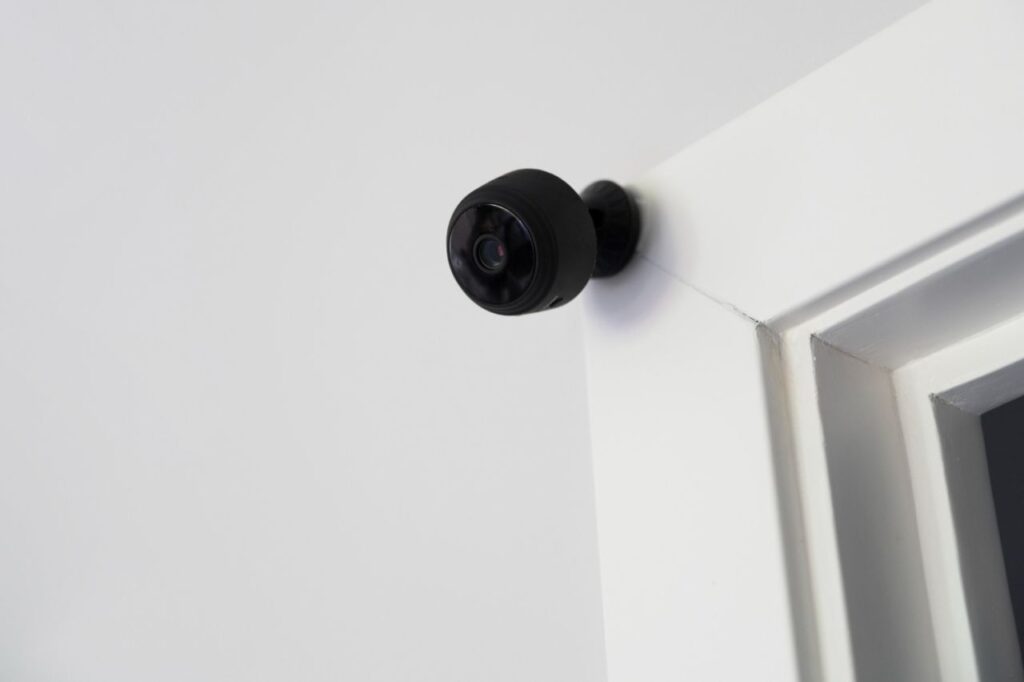
Systematic Methods for Protecting Information
Some security cameras and the wireless routers they come with still use the insecure Wired Equivalent Privacy (WEP) and Wi-Fi Protected Access (WPA) default settings, even though there are better solutions available (WPA). In light of what we're about to discuss, it's highly recommended that you invest in a security camera supporting at least WPA2 and preferably WPA3.
Wpa2
New in 2006, the current standard provides stronger encryption and authentication than its predecessor, WEP, which had become outdated and ineffective. WPA2 adds an extra degree of security against hackers by requiring a longer password than the original WPA. As an additional point to remember, WPA2 does not employ the less secure Temporal Key Integrity Protocol like WEP and WPA (TKIP).
Wpa3
The Wi-Fi Alliance, a non-profit organisation, made the official announcement of Wi-Fi Certified WPA3 in June of 2018. This takes the security of WPA2 to the next level by adding an extra layer of cryptographic and authentication strength when transmitting sensitive data like login information.
The company claims that WPA3 is more secure because it uses a "resilient, password-based authentication even when users use passwords that fall short of standard difficulty guidelines." According to the official description, WPA3 is a more secure password-based authentication method "even when users use passwords that fall short of standard difficulty requirements."
Different Kinds of Alarms and Monitoring Equipment
Local alarm systems are the most secure against hacking, but they are incompatible with the needs of modern customers who expect push notifications and mobile apps. However, there are compromises that provide the user a choice of whether or not to access the internet.
Instead, you should search for a system that authenticates users with passwords and encrypts data at every stage of the process if you want to be alerted anytime any of your alarms or sensors activate. If you're worried that an intruder might break into your electrical system to turn off your security sensors and cameras, battery-operated devices are probably your best bet. As an alternative, you may use a system that relies on a landline or cellular connection that works even if the power goes out. Unfortunately, there are many different kinds of security systems to choose from, and there are no hard and fast rules for figuring out which ones are the most trustworthy. Whatever the case may be, a brief summary of the most common types of systems is provided below.
Creating Your Own Safe Space
Do-it-yourself (DIY) security systems are becoming more and more common in the market for smart home security systems. Furthermore, users will often self-monitor these systems via their own mobile apps, however professional monitoring may be an option in some instances.
Distant Monitoring Equipment
Many wireless security system features operate independently of the home's electrical system, using rechargeable batteries as their sole source of energy. Having a cellular or landline backup is preferable for many users in case their Wi-Fi connection drops.
High-Quality Security Equipment
One of the most important considerations is the fact that professionally installed security systems are also properly monitored. What determines how readily a security system may be breached is not the security system's underlying design, but rather the precautions taken by the firm and the user.
Seek the Advice of Experts
While there's no foolproof way to ensure your security cameras won't be hacked, taking the measures we've discussed will lessen the odds. Furthermore, as the frequency and sophistication of attacks rise, it is crucial to work with a provider of security services that can give technologically advanced solutions.
Conclusion
In every other way, wireless home security systems are much like any other computer-based system. A hostile actor can exploit a vulnerability in even the most sophisticated security system. Within three metres (approximately ten feet), an intruder can deactivate the system and enter your home undetected. Both smart security cameras and systems are vulnerable to hacking. The potential for being hacked stems from a multitude of causes, some of which can be altered by humans.
Passwords for security-related apps that aren't lengthy, complicated, and individual to each user account are a security risk. Methods of Penetration Testing When there are data breaches and no encryption is in place, hackers have an easier time accessing into networks. If a security system is built in accordance with these standards, however, it becomes far more difficult to breach. Code can be used to carry out man-in-the-middle attacks.
A hacker must "listen" for login credentials by sniffing data packets. If a hacker gained access to a pan-tilt-zoom camera, they would be able to change the camera's focus and direction of view. Data breaches are the most common source of stolen login credentials exploited by cybercriminals. A hacker can use your email and password to access your online dating and shopping accounts. It is possible to lessen the risk of being attacked by taking safeguards like using a password manager and wifi encryption.
For example, credential stuffing can compromise your security camera's online video feed. Security camera footage is always at risk of being compromised by hackers. A distributed denial of service (DDoS) assault could cripple your camera's ability to connect, function, and maintain its power supply. Prioritize the security of your wireless network and router. Password databases are often the starting point for remote intrusions.
With two-factor authentication, unauthorised users are more likely to fail. WPA2 is more secure than its predecessor, WPA, because it requires a longer password. When transferring sensitive data like login information, Wi-Fi Certified WPA3 provides an additional layer of cryptographic and authentication strength. Although locally installed alarm systems are hack-proof, they do not meet the requirements of today's consumers. The greatest option would be to instal security cameras and sensors that run off of batteries.
Many components of wireless security systems are self-sufficient, meaning they don't need to be plugged into the mains in order to function. Many people would rather not rely solely on their Wi-Fi connection and instead have a cellular or landline backup. In certain situations, professional monitoring could be useful.
Content Summary
- An additional part of your security setup to monitor is encryption.
- Data can be viewed by hackers if your system doesn't have a strong enough level of encryption.
- The vulnerability of smart security systems and smart security cameras to hacking derives from a wide variety of causes, some of which are within the control of humans and others of which are not.
- A security system's apps are more susceptible to intrusion if their passwords aren't lengthy, complicated, and individual to each user.
- As just one example, in 2019 alone, a data breach affected more than 3,000 users of the Ring security app.
- Now, anyone who finds a lost smartphone or tablet and doesn't know the passcode can potentially gain instant access to and monitor the homeowner's security system and cameras.
- The illegal act of taking advantage of weaknesses in computer systems is known as "hacking." "hacking.
- If a system doesn't employ or demand robust authentication techniques, such passwords, then it's much easier to break into.
- While phishing remains the most popular method of infecting computers, programming can also be used to obtain access.
- Hacks that require knowledge of programming, such as compromising a system to get administrative access, are much more complex than phishing.
- A successful hack that necessitates familiarity with computer code is much more difficult to do.
- To the best of our knowledge, there is not yet a specialised warning system in place for these kinds of assaults.
- Any unusual or unapproved activity could indicate unauthorised access to the system. At any time, the camera could be turned on by a hacker who has access to the system.
- Hacking into a security camera or system is a significant infringement of privacy, therefore being aware of the warning signs is essential.
- We realise that concerns regarding security system hacks may not be at the top of your list, but we can't ignore them either.
- Intruders can access your security cameras by using the stolen credentials, as was previously mentioned.
- A wireless router or webcam could be helpful in this endeavour.
- It is possible to lessen the risk of being attacked by taking safeguards like using a password manager and wifi encryption.
- A hacker can use software to cross-reference or dump your credentials into the login page of a website you frequently visit, giving them access to your online shopping and dating accounts, as well as any other accounts that use the same combination passwords.
- If your security camera and router use the same password and the password has been hacked in the past, then anyone with access to the internet can watch your live video feed.
- The default factory-issued passwords for your network's routers and camera make it easy for hackers to circumvent any security measures you take.
- An intruder would need physical access to the main control room where the cameras are monitored in order to undertake a local attack against a commercial CCTV camera cluster.
- A distributed denial of service (DDoS) attack is an assault on an online service that involves flooding it with traffic from several sources, which could affect your camera's connectivity, functionality, and power.
- If you plan to employ wireless security cameras, you need give special attention to the security of your wireless network and router.
- This additional security measure ensures that no unauthorised parties may decipher information transmitted over your network's access points.
- If you're having trouble keeping track of a large number of auto-login credentials, a Password Manager is a great solution.
- Setting up automatic updates is a must if you want to use the bundled security camera applications for remote monitoring.
- It is far more challenging for unauthorised users to get access to a system when two-factor authentication is in place.
- Even though there are more secure alternatives, the Wired Equivalent Privacy (WEP) and Wi-Fi Protected Access (WPA) default settings are still used by some security cameras and the wireless routers they come with (WPA).
- Considering what we're about to go through, a security camera that supports WPA2 and preferably WPA3 is a must-have.
- The latest standard, introduced in 2006, offers more secure encryption and authentication than its predecessor, WEP, which had become obsolete and insecure.
- By enhancing the encryption and authentication power of WPA2, this further strengthens the security of transferring sensitive data like login information.
- When compared to WPA2, the business says that WPA3 is safer due of its "resilient, password-based authentication even when users employ passwords that fall short of conventional complexity requirements."
- Officially, WPA3 is described as a more secure password-based authentication mechanism "despite the fact that users may choose passwords that are too easy.
- If you want to be notified whenever your alarms or sensors activate, you should look for a system that authenticates users with passwords and encrypts data at every level.
- Security sensors and cameras that run on batteries are your best bet if you're concerned about an intruder cutting power to the building.
- Unfortunately, there are numerous options for security systems, and there are no concrete guidelines for choosing the most reliable one.



